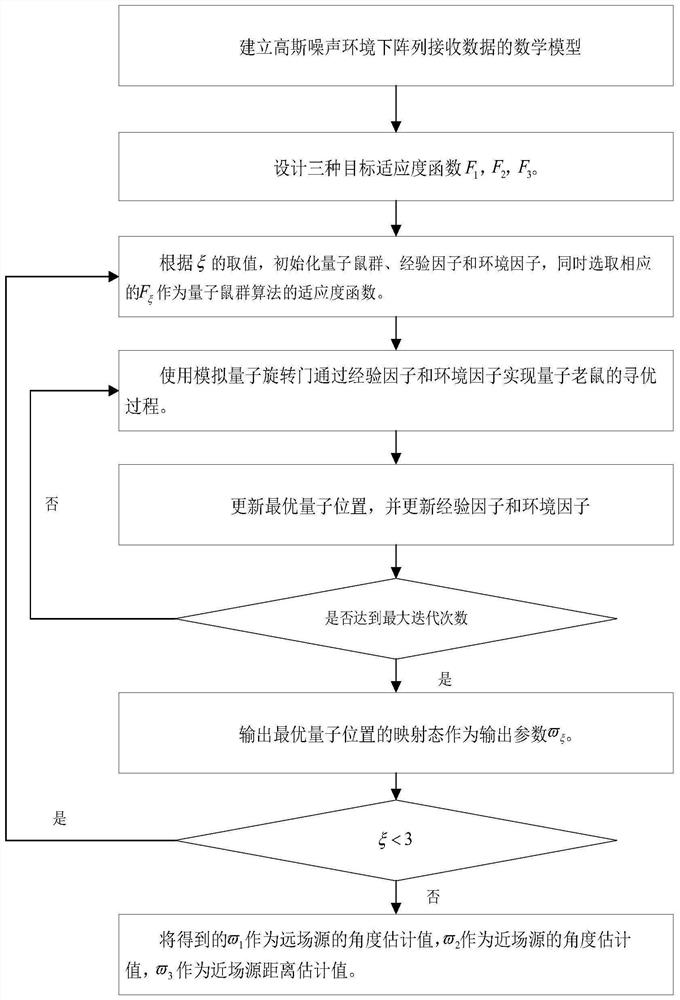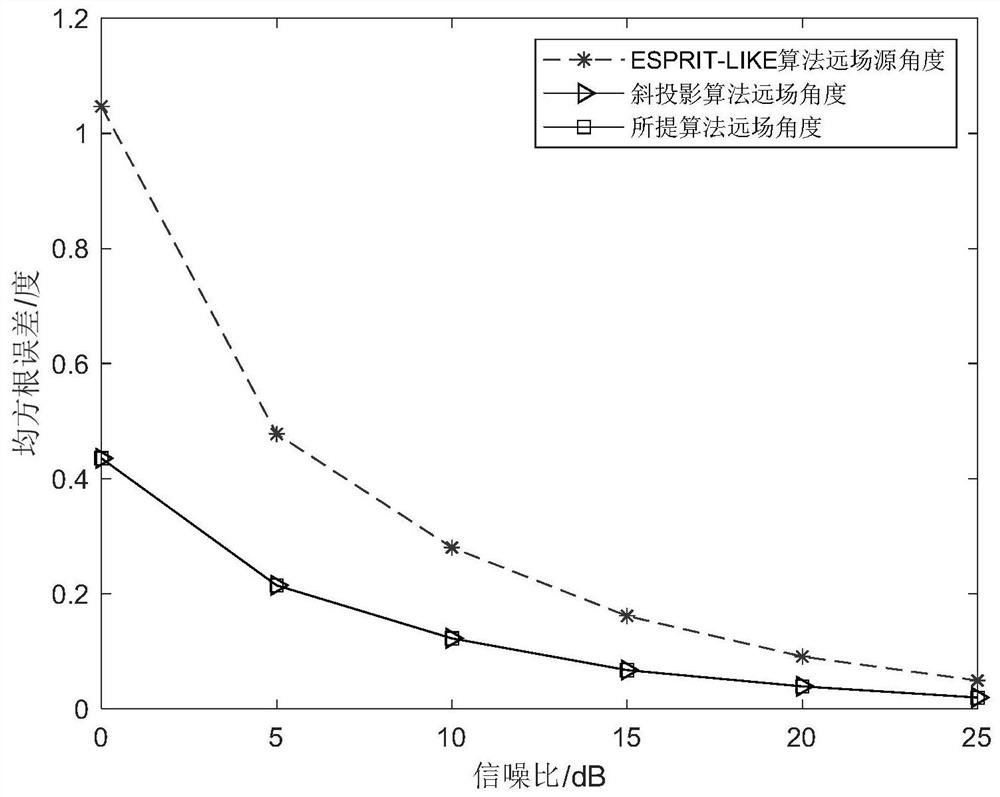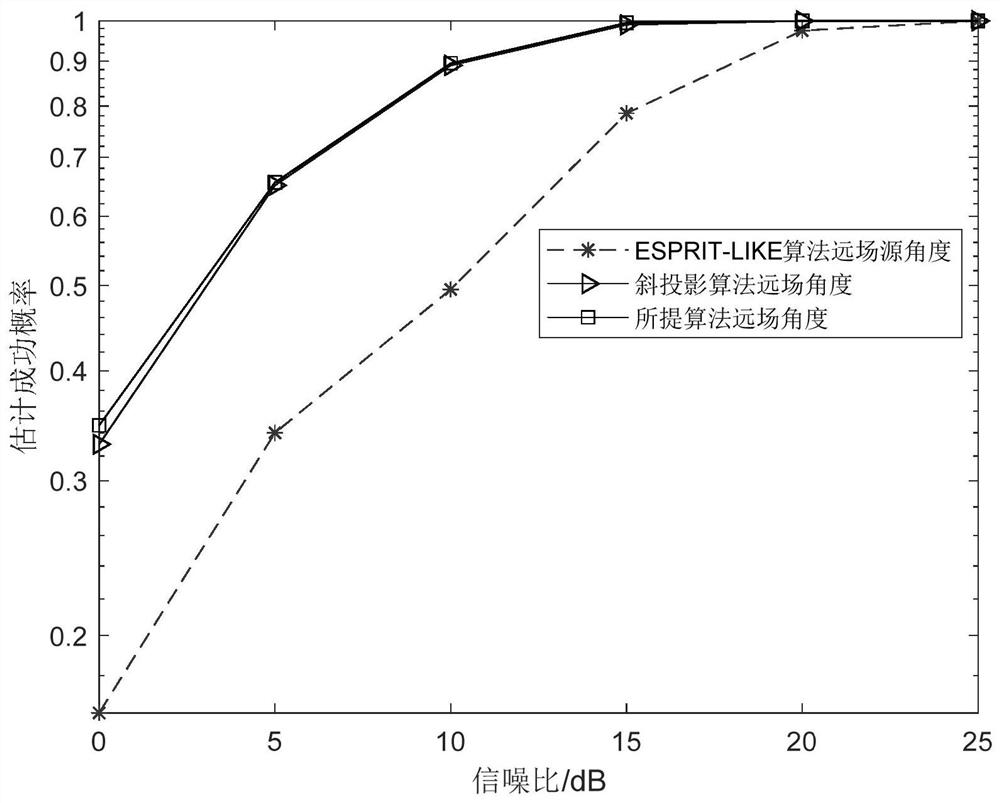Near-field and far-field source mixed direction finding method based on quantum mouse group
A near-field source and far-field technology, which is applied to direction finders using radio waves, direction-determining devices, measuring devices, etc. Existing quantization error, improving direction finding accuracy, and the effect of excellent separation performance
- Summary
- Abstract
- Description
- Claims
- Application Information
AI Technical Summary
Problems solved by technology
Method used
Image
Examples
Embodiment Construction
[0052] The present invention will be further described below in conjunction with the accompanying drawings and specific embodiments.
[0053] combine figure 1 , a kind of near-field and far-field source mixed direction-finding method based on quantum mouse swarm of the present invention, comprises the following steps:
[0054] Step 1, establishing a mathematical model of a uniform symmetrical line array receiving signal under Gaussian noise.
[0055] Suppose there is a uniform linear array composed of 2N+1 co-tropic omnidirectional antennas, and K narrowband signal sources with a wavelength of λ travel from a direction angle of θ k The direction of (k=1,2,…,K) is incident to the linear array, where it is assumed that the former K 1 (0≤K 1 ≤K) sources are far-field signal sources, after K-K 1 The source is a near-field source. The distance between adjacent array elements is d. Under the assumption that the signal is a narrowband signal, for the tth snapshot, the received d...
PUM
 Login to View More
Login to View More Abstract
Description
Claims
Application Information
 Login to View More
Login to View More - R&D
- Intellectual Property
- Life Sciences
- Materials
- Tech Scout
- Unparalleled Data Quality
- Higher Quality Content
- 60% Fewer Hallucinations
Browse by: Latest US Patents, China's latest patents, Technical Efficacy Thesaurus, Application Domain, Technology Topic, Popular Technical Reports.
© 2025 PatSnap. All rights reserved.Legal|Privacy policy|Modern Slavery Act Transparency Statement|Sitemap|About US| Contact US: help@patsnap.com



